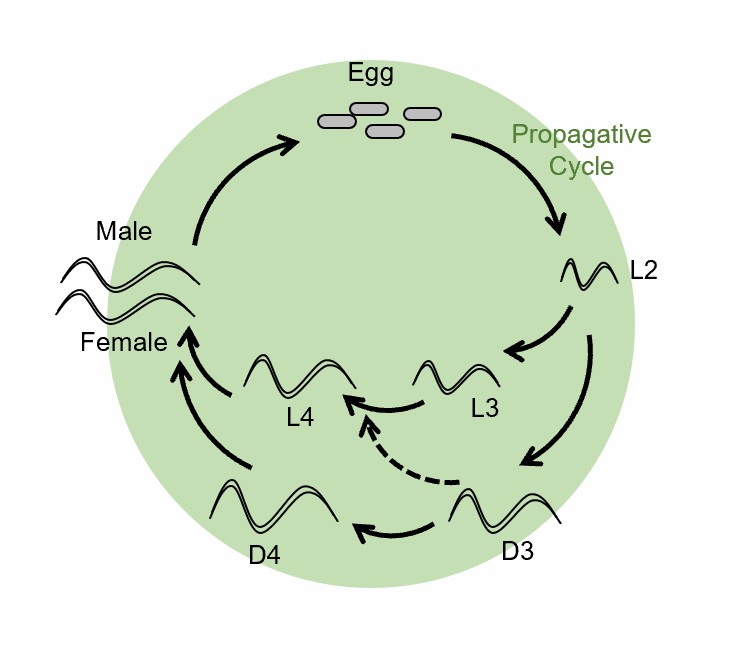Identification of Plant Nematode Diseases
Nematodes are diverse, microscopic multicellular animals comprising free living to plant species. They parasitize a wide range of plant species, including monocots and dicots. They are one of the most limiting factors for major crops, causing an estimated annual crop yield loss worldwide. Reliable, fast, and proper nematode disease identification are mandatory for choosing adequate management control strategies and for avoiding the spreading of exotic nematodes in quarantine materials.
Lifeasible, as a leading global company, is committed to helping our customers achieve effective and successful research. We provide identification of plant nematode diseases. In addition, we deliver reliable results and reports on time to our customers worldwide.
-
Numerous procedures have been used to stain and clear nematode-infected plant tissues. More rapid means of clearing and staining roots include autoclaving, exposure to saturated chloral hydrate, and root maceration after staining. However, extreme care is required for these methods.
- Lifeasible provides nematode staining in diseased root tissue and protocol, which is the first step in the identification of plant nematode diseases.
- There are three types of nematode reproduction, amphimixis refers to the union of sperm and egg, hermaphroditism refers to functional male and female sex organs on the same individual, and parthenogenesis refers to the production of offspring from eggs that have not been fertilized.
 Fig.1 Life cycle of plant nematodes.
Fig.1 Life cycle of plant nematodes.
-
A nematode life cycle (egg to egg) generally requires 3 to 4 weeks. We provide propagation and purification of nematode populations and protocol, which is the basis of plant nematode disease research. We mainly use the incubation method for propagation that can be applied to most plant nematodes.
-
Several species of nematodes can be found at different densities in almost any soil ecosystem, and their diversity depends on various reasons, such as climatic conditions and host presence. Mainly root-damaged nematodes (RLN, Pratylenchus spp.) and grain sac nematodes (CCN, Heterodera spp.) hurt crops and caused economic losses.
-
We provide services of nematode species identification using morphological, morphometric, and molecular tools.
-
The variation of plant nematodes may be related to climatic conditions, variety layout, ecological conditions, and other factors in different regions. The extent of the influence of these ecological factors remains to be further studied.
- Therefore, it is an important problem to study the relationship between ecological factors and genetic variation of geographical populations in different regions and identify the main causes of genetic variation in nematodes.
- We provide analysis of nematode variation, including population variation, pathogenicity variation, DNA genetic variation, and so on.
Lifeasible is always devoted to providing high-quality and satisfactory service to our customers. If you are interested in our services or have any questions, please feel free to contact us or make an online inquiry.
For research or industrial raw materials, not for personal medical use!
 Fig.1 Life cycle of plant nematodes.
Fig.1 Life cycle of plant nematodes.